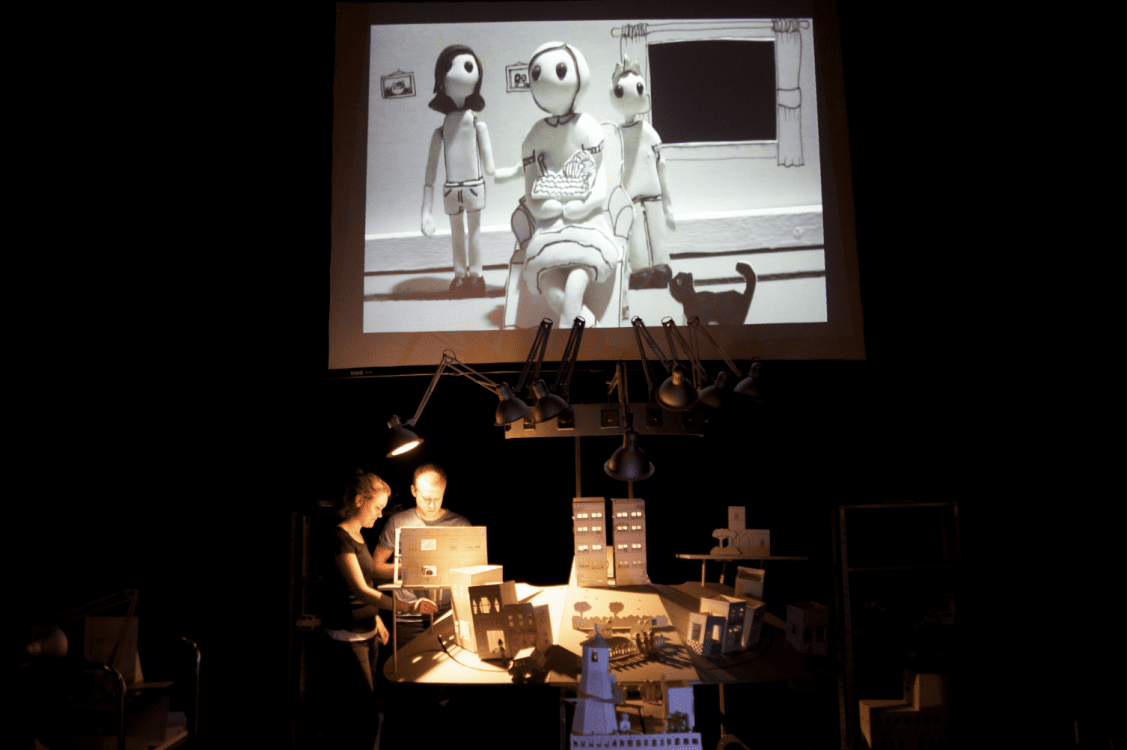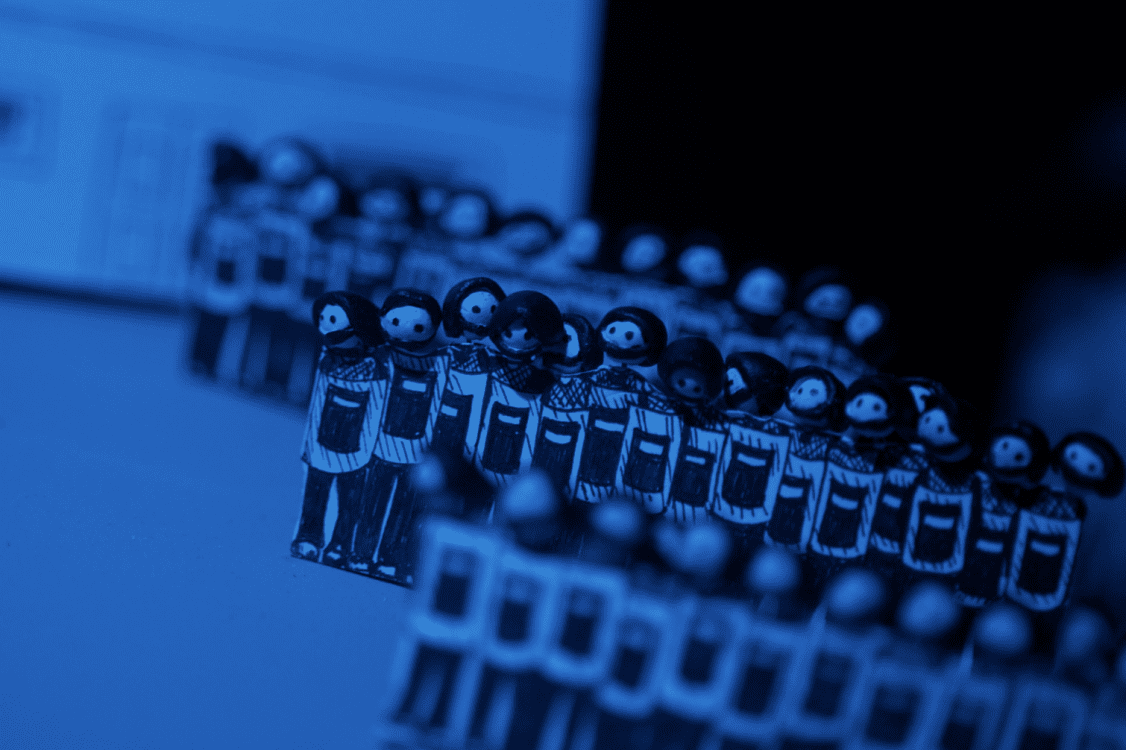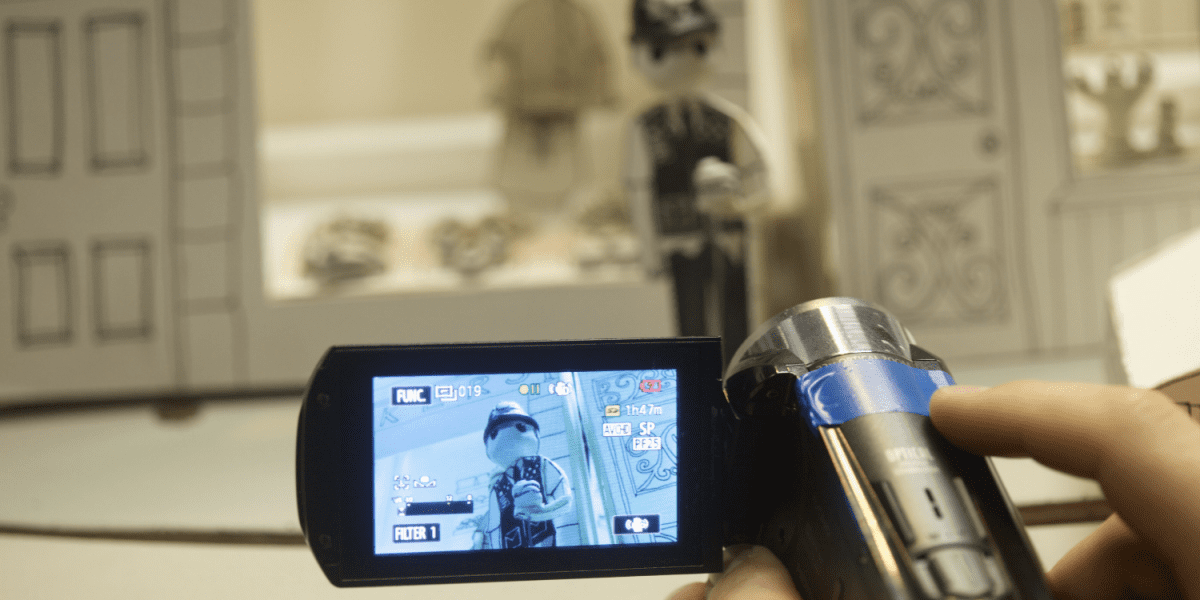Feral opens with the tamest of images: a man walks on stage and, with a black sharpie, draws a stick figure, which he labels, “Joe (Me)”. The man continues to draw and label: Mom, cat, and, Sister, who wears a cape. We watch this all on a live feed video projected above the stage. Then, a performer with a camera zooms in on a minute house, featuring puppets to scale, of the characters we just met. We cut back to the overhead shot of the man drawing, and he draws a birds-eye view map of the small English seaside town of his youth. As he summons the world into being on the page, the other performers create it onstage. The cartoonist draws birds, and the man sitting at the soundboard (located on stage) cues seagulls’ caws. The man draws a boat, and a steam horn blasts through the cozy theater. As he draws a butcher shop, church school, and hair salon the other performers produce small, scale models of each attraction.
With the map complete, we cut once more to the handheld cameras, and the ensuing montage introduces us to the idyllic small town, wrought completely from white molding clay (puppets and props), poster board (sets), and black sharpie. The simplicity of the design evokes a sense of childlike whimsy, buttressed by the actual sequence of events and the remarkable precision of Ross Mackay’s direction and imaginative completeness of the Amelia Bird’s set and Jim Harbourne’s sound and music design. The sister delivers newspapers, a row of women sit with their heads in the ovens at a beauty salon, the priest communes with a squirrel, and a pair of young lover kiss. This is a semi-rural Eden, where everyone knows each others names, everything has its proper place, and nothing seems to go wrong.
Joe, however, bristles against this monochromatic peace. Mom is negative, limiting figure. In one memorable shot, we see Joe stand at a window in his living room, watching the fun and games down on the boardwalk far away. When he asks his mother if he can go, she refuses, until his sister intervenes. She is his super hero (hence the cape), saving Joe from the mundane confines of the home.
Joe, we discover in one inspired sequence where the adult narrator flips through a sketch book belonging to the youthful character, is obsessed with superheroes. Like many stilted children, superheroes represent a sort of escape fantasy for Joe, along with the belief in inherent goodness and its ability to win out. When Joe hears that a new development, a Supercade, will replace the park as the center of the town, he is overjoyed. He believes that superheroes live in the Supercade.
He’s wrong, of course. We discover that the mayor has accepted a large bribe to allow the construction of the Supercade. Once the structure goes up, the town goes out of control. The Supercade does nothing more than ruin the economy. Once more, the cameras pan through the model village. This time the world is noticeably darker, both literally and tonally. The quaint antique shop goes out of business, the dog urinates on fire hydrants, and our innocent smooching lovers bugger by the bus stop.

If these changes feel extreme in tone, that’s because they’re supposed to. This performance is as much an animated film as it is a play, and, as such, it sticks true to animations excesses. Indeed, one of the Feral’s greatest accomplishments (of many) rests in its ability to create a cartoon-like logic on a live stage, and present it with sophisticated and visually intelligent camera work in real time. That, and the stark tonal differences between the first half of the show and the latter underscore a central thematic concern. Ultimately, this show is about perspective and innocence lost. We see things not as they were, but as the narrator remembers them while he peers through the fog of decades at a pivotal moment in his early childhood. As the play barrels towards its emotional climax, we get swept up in Joe’s realization that nobody, not even our heroes, are immune from the evils of this world.

